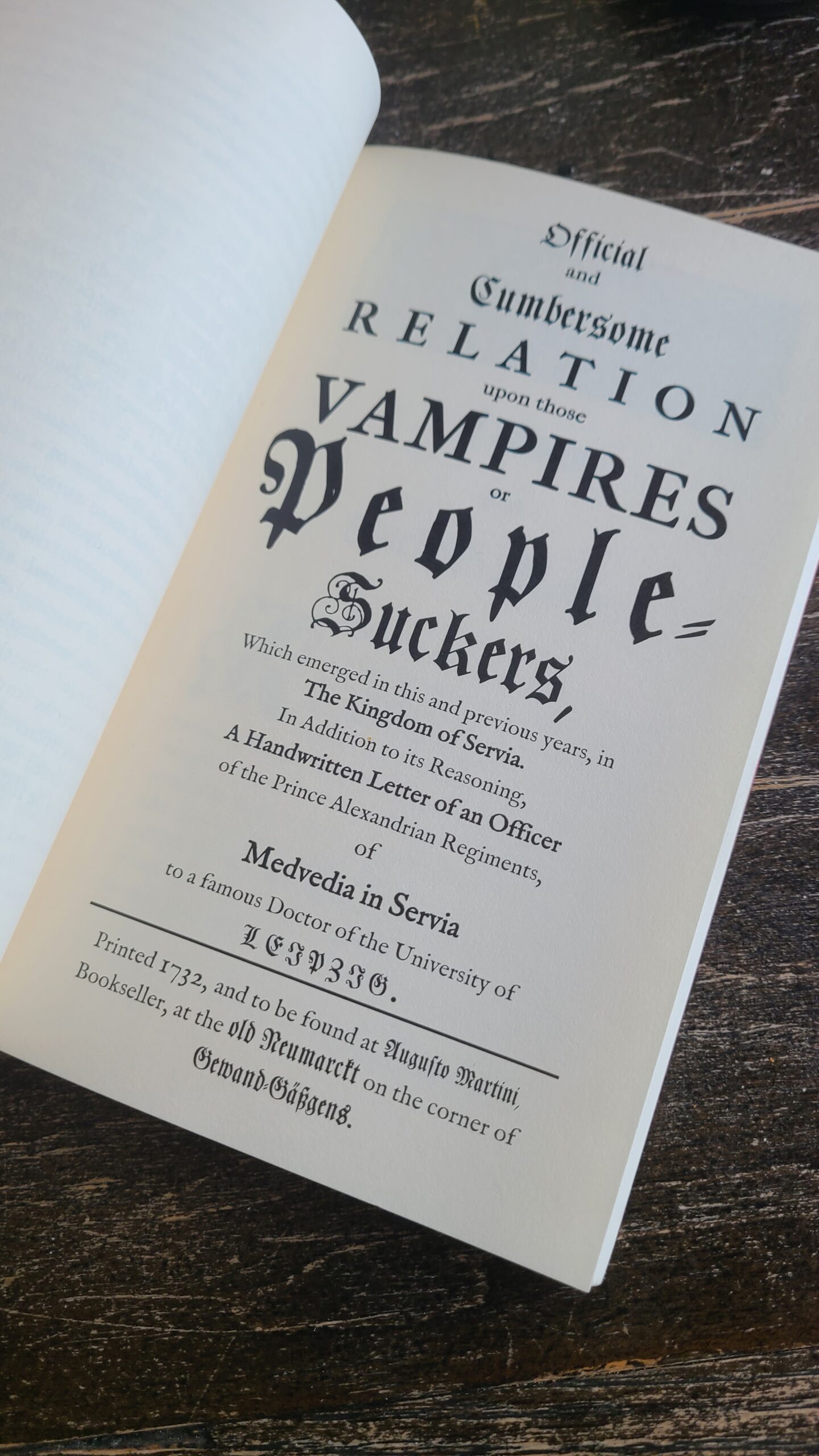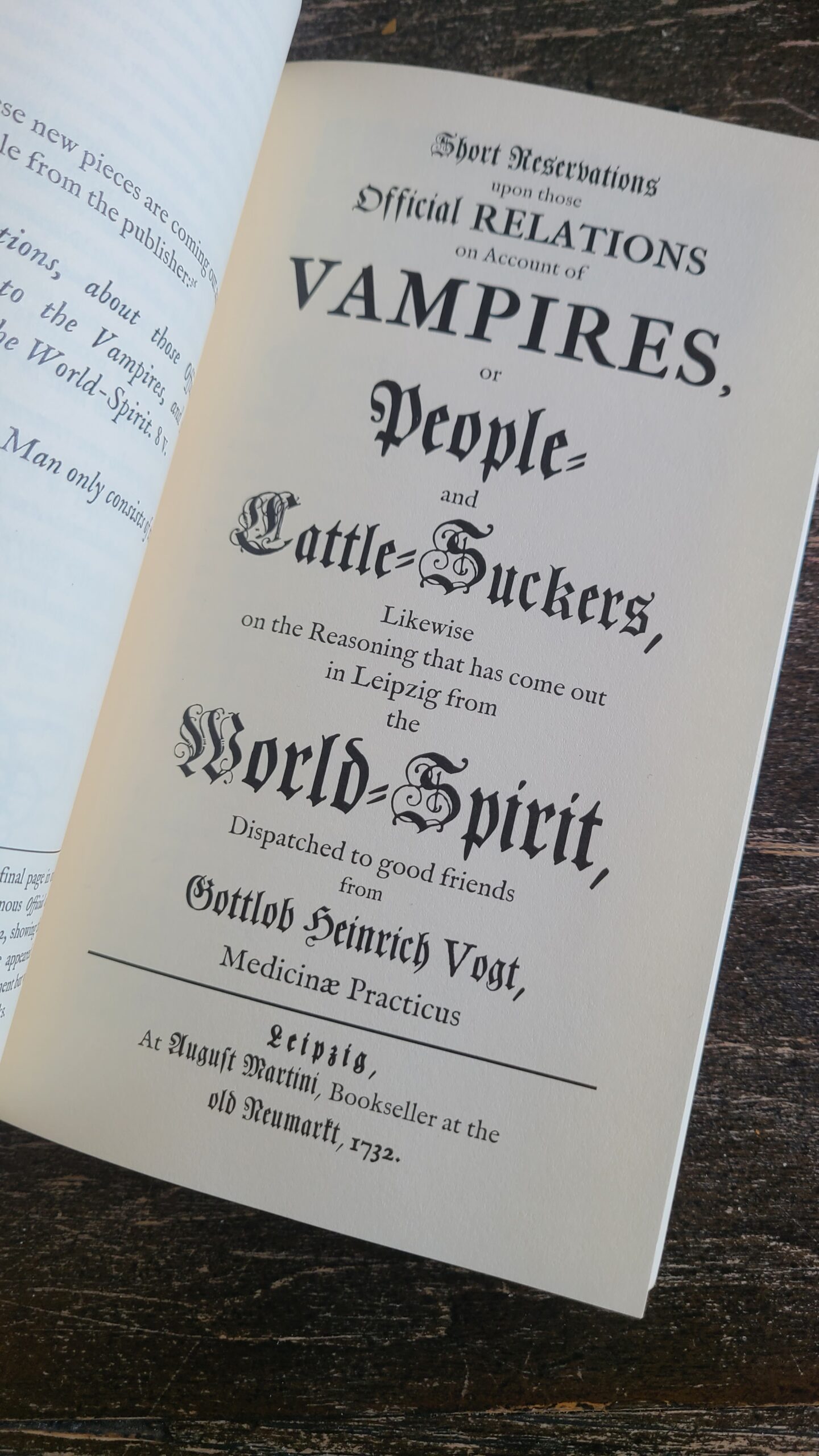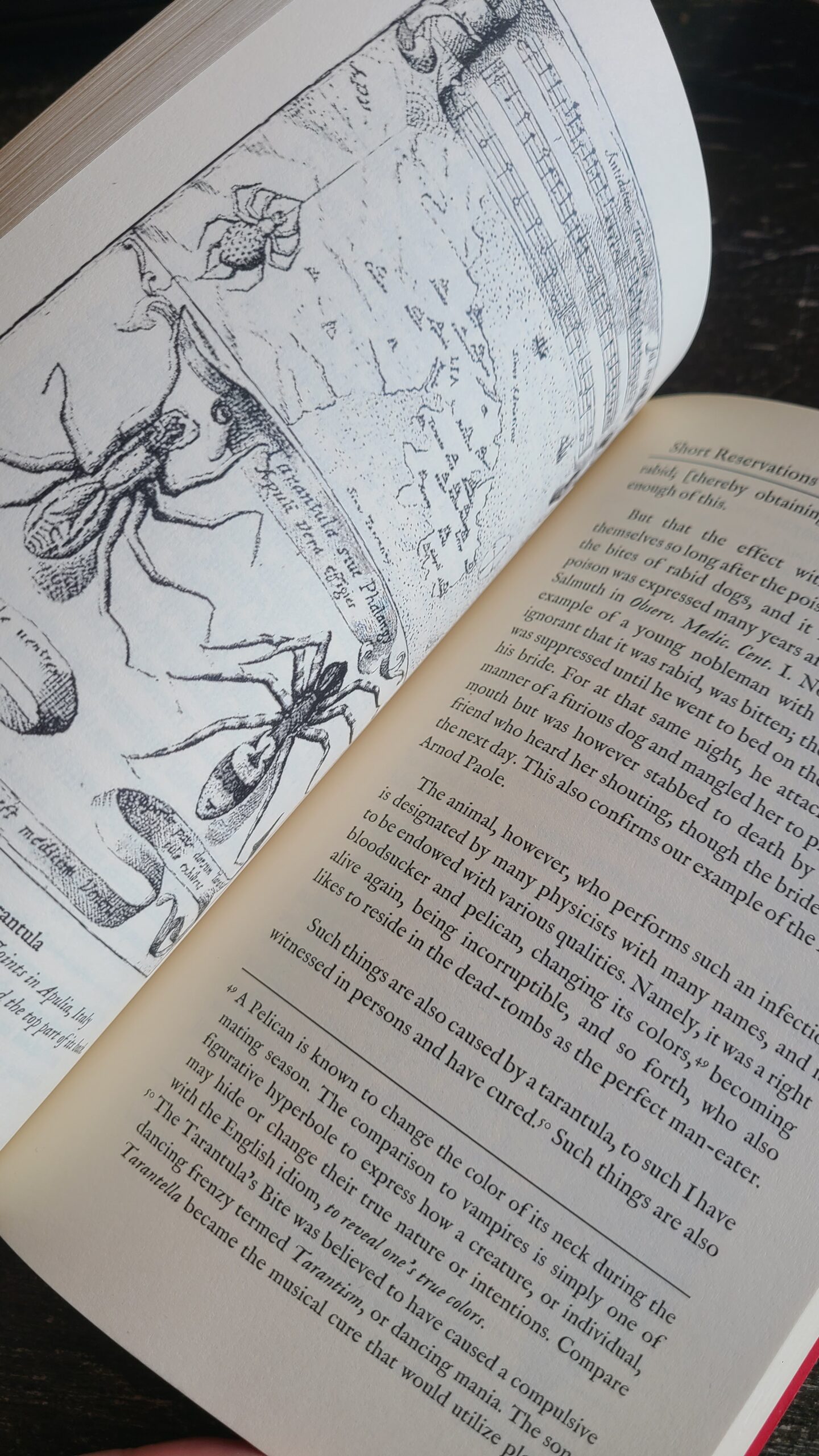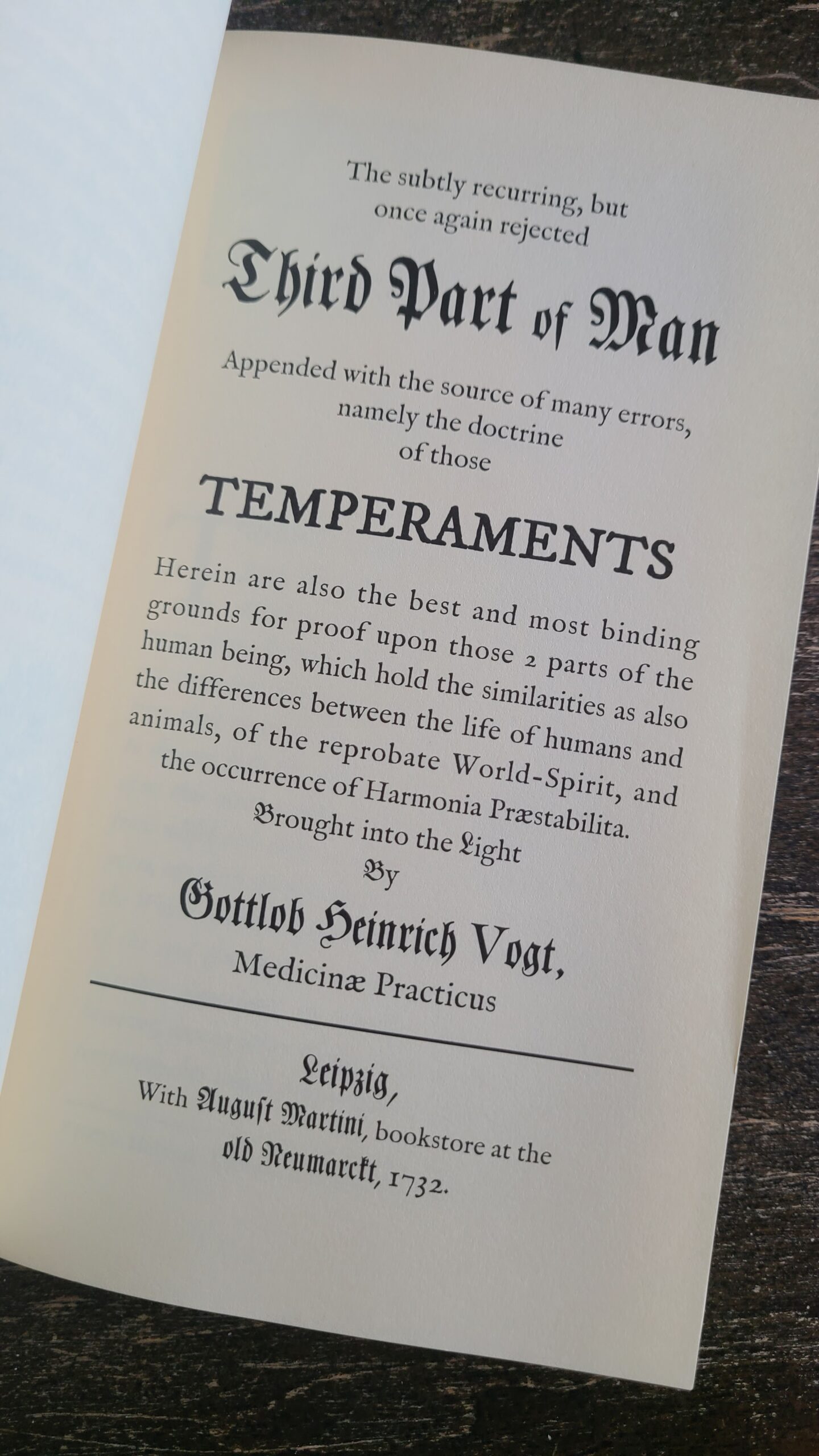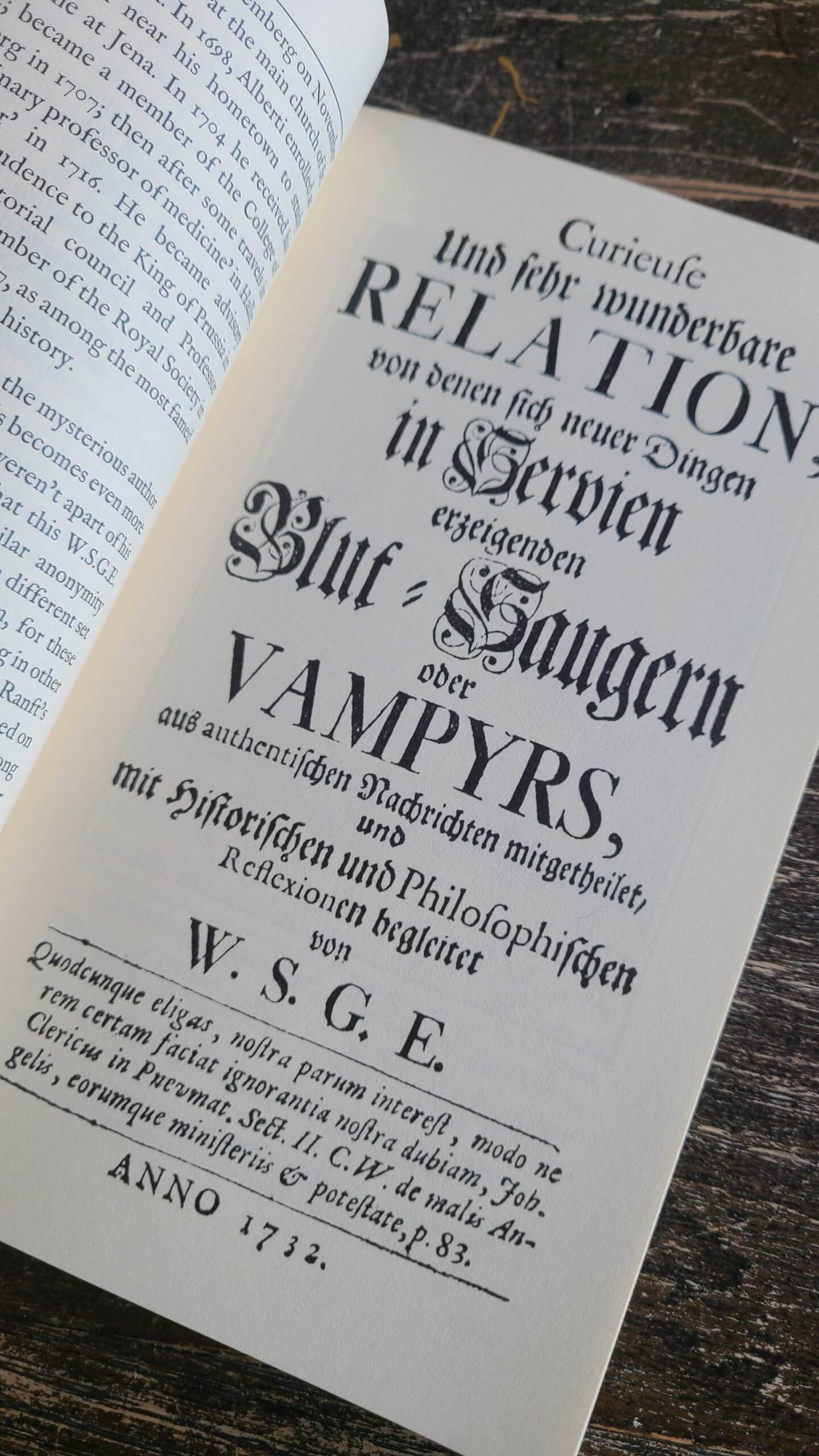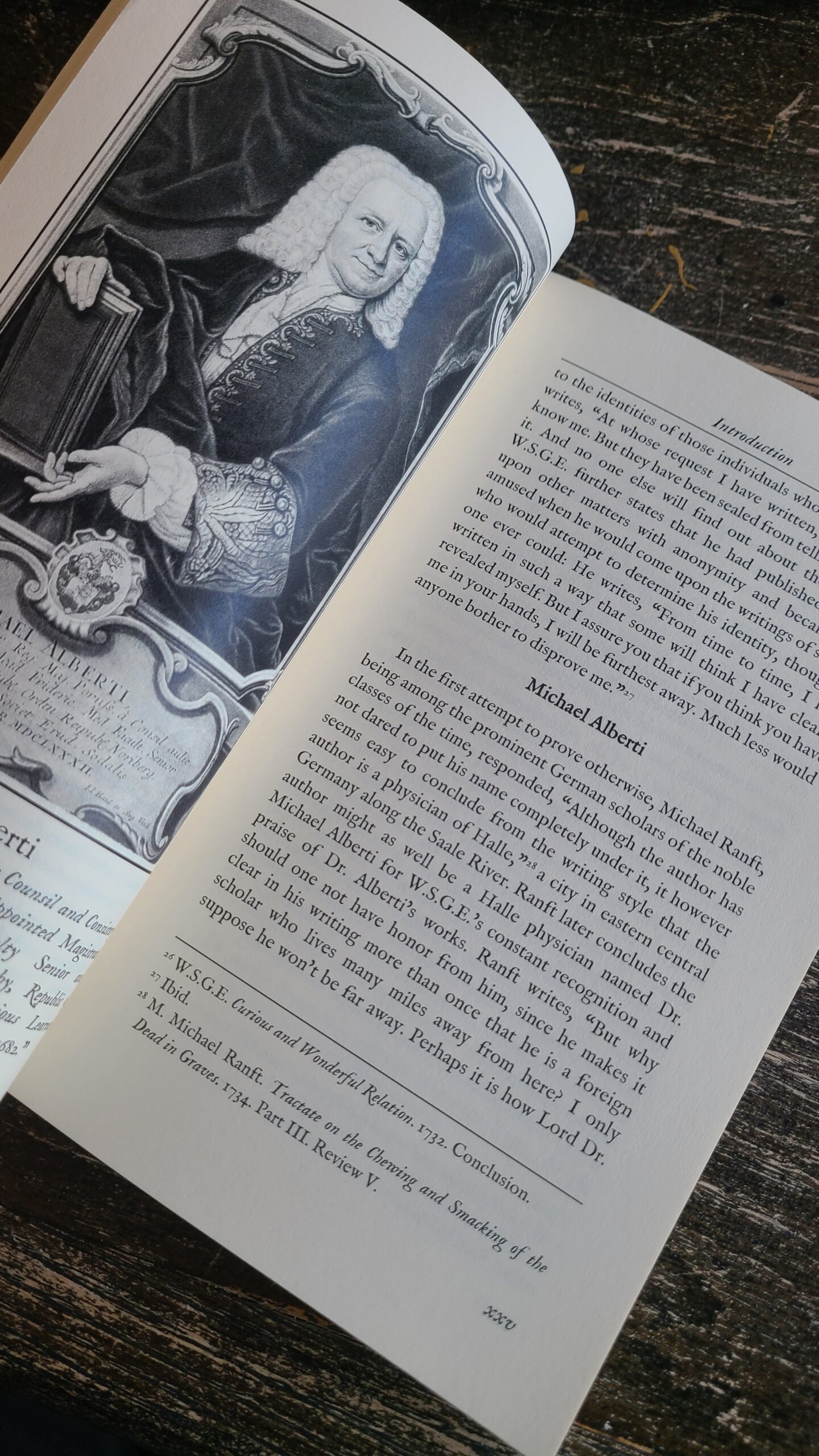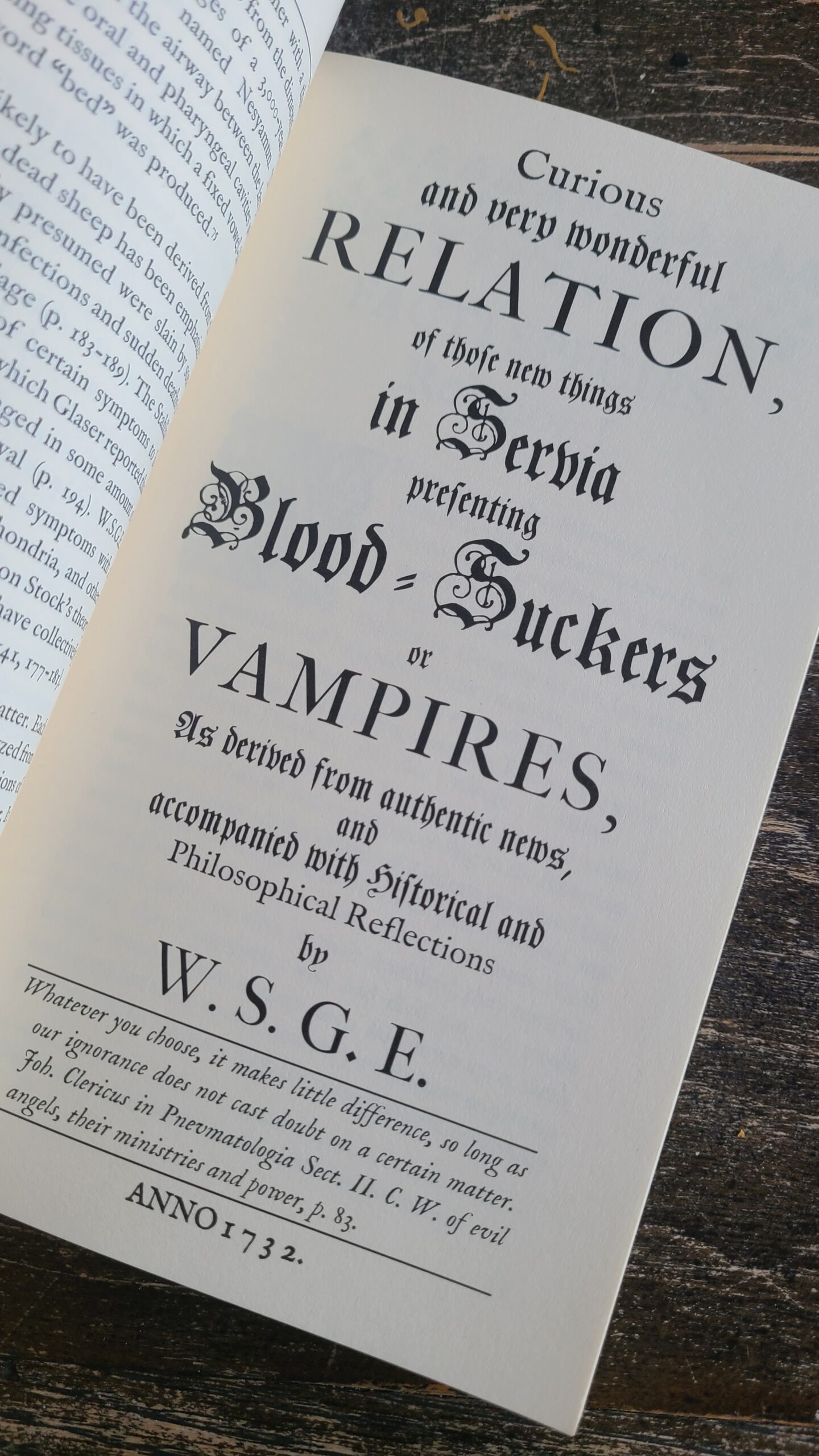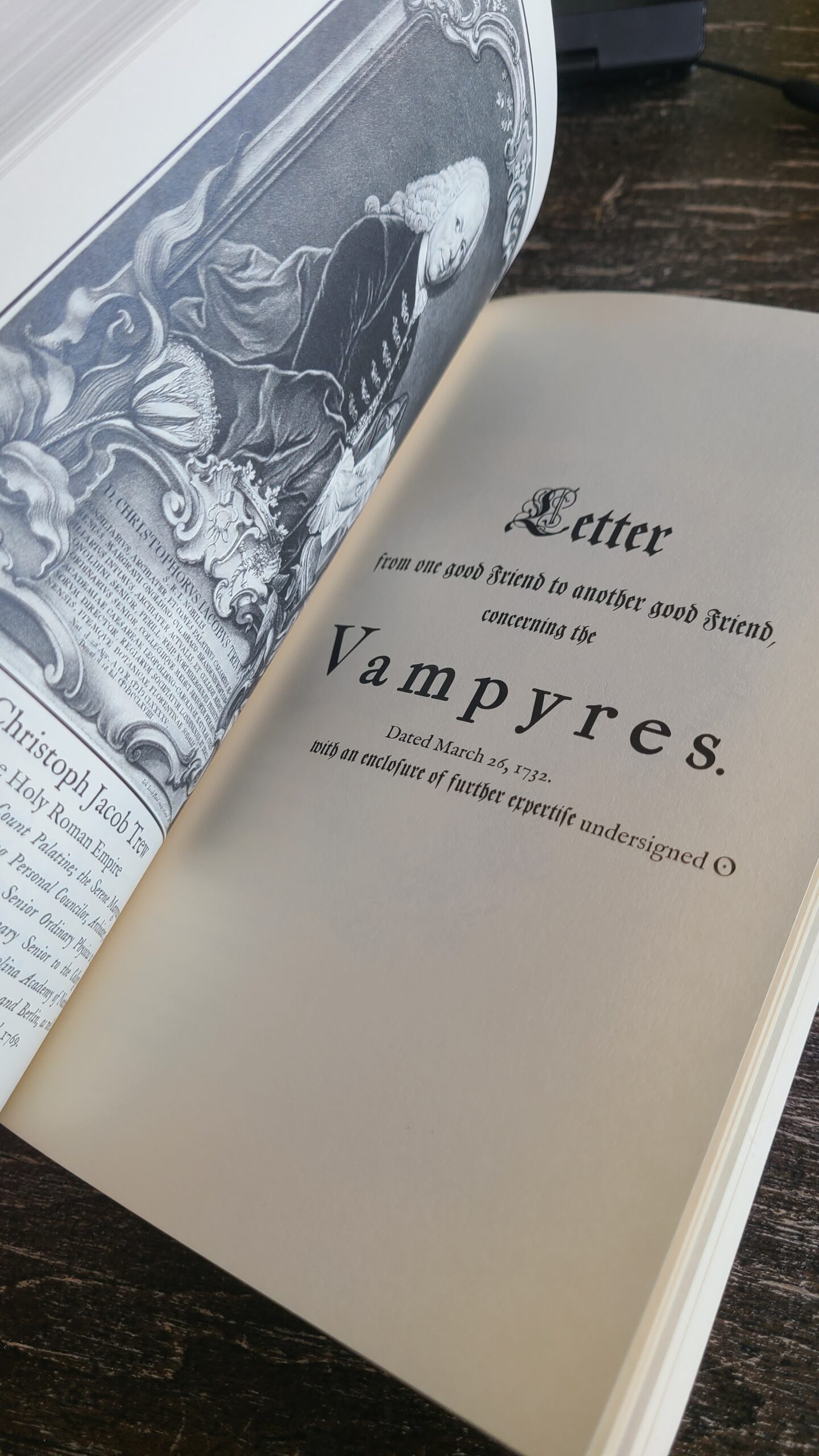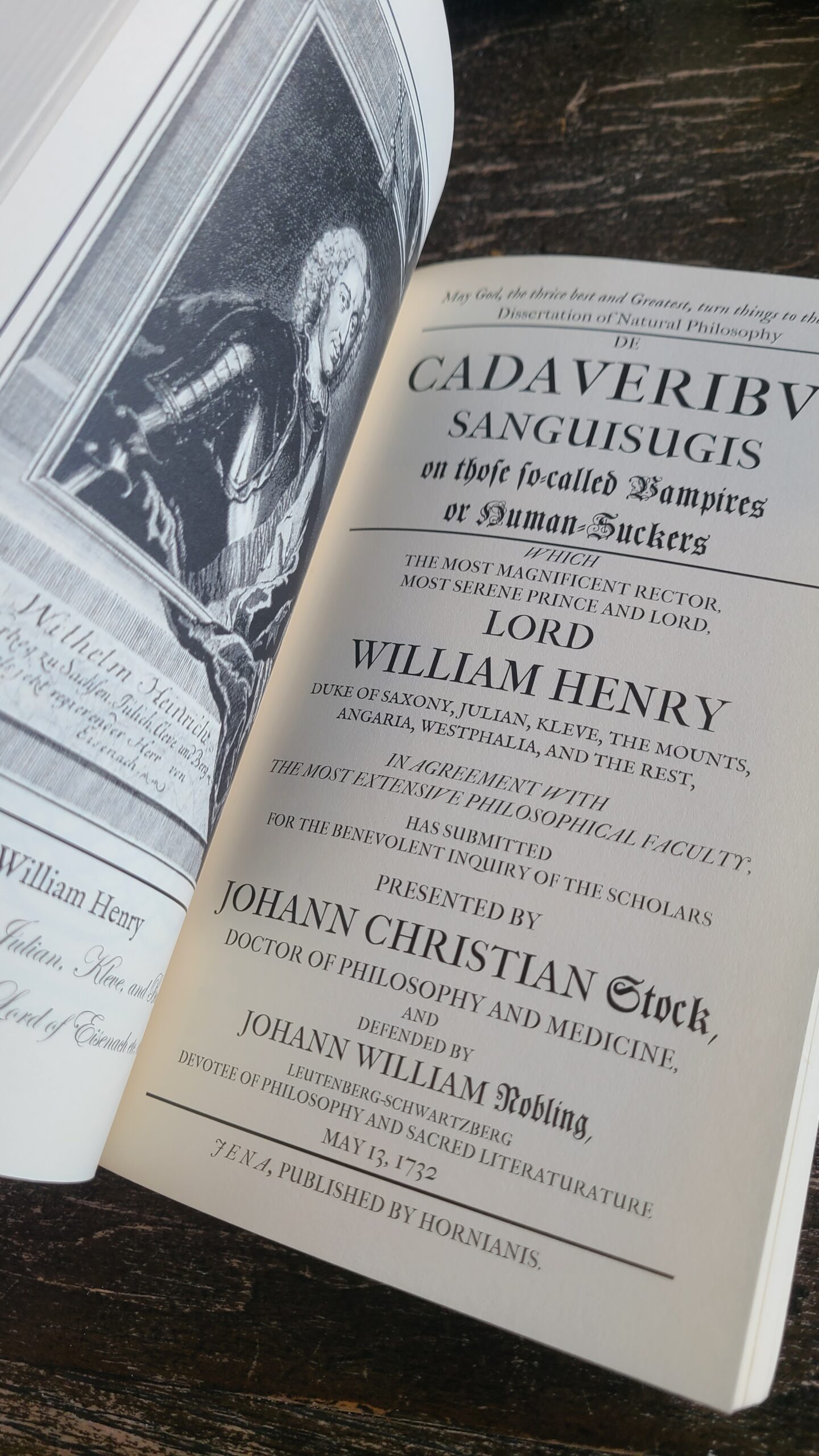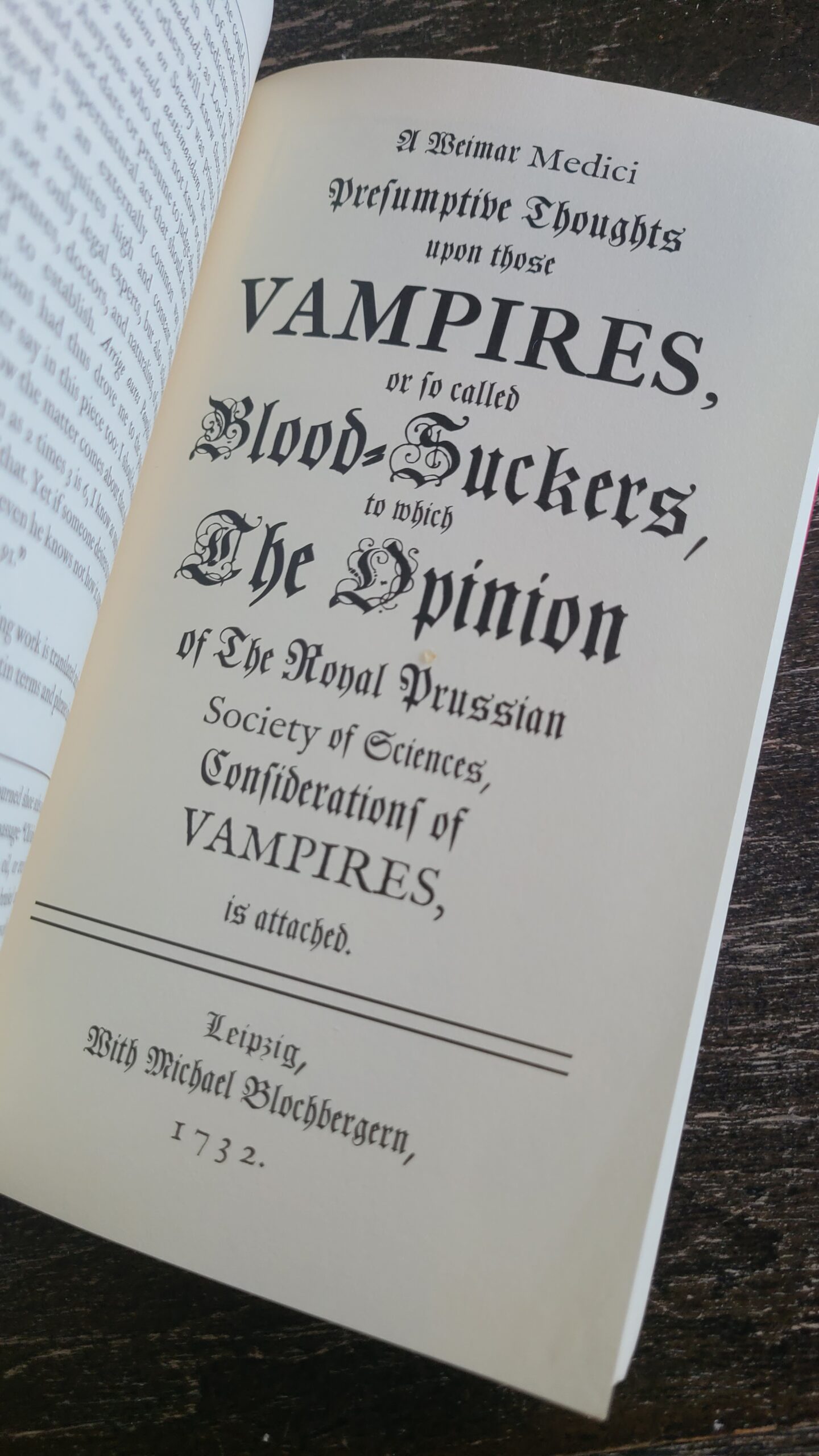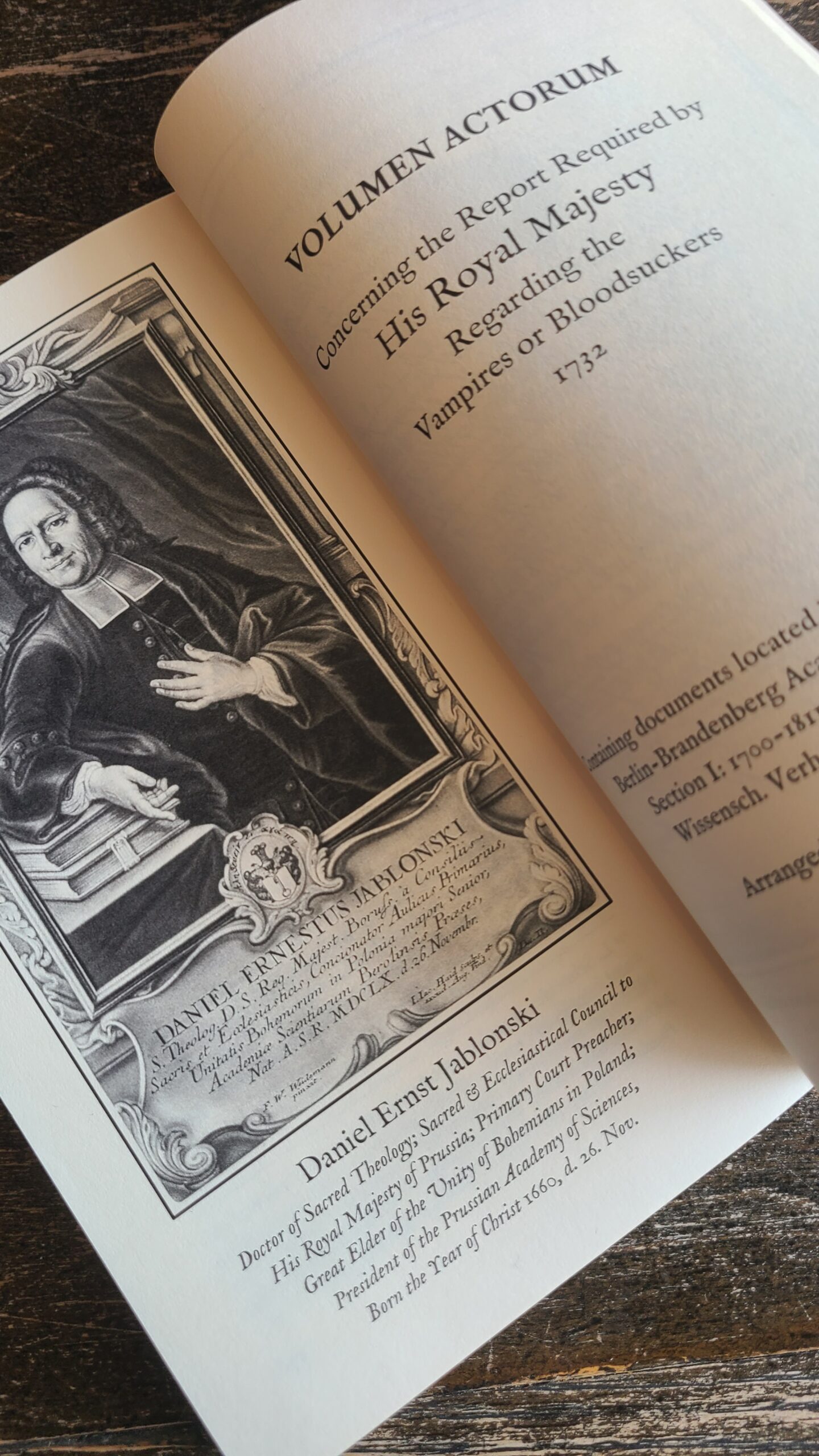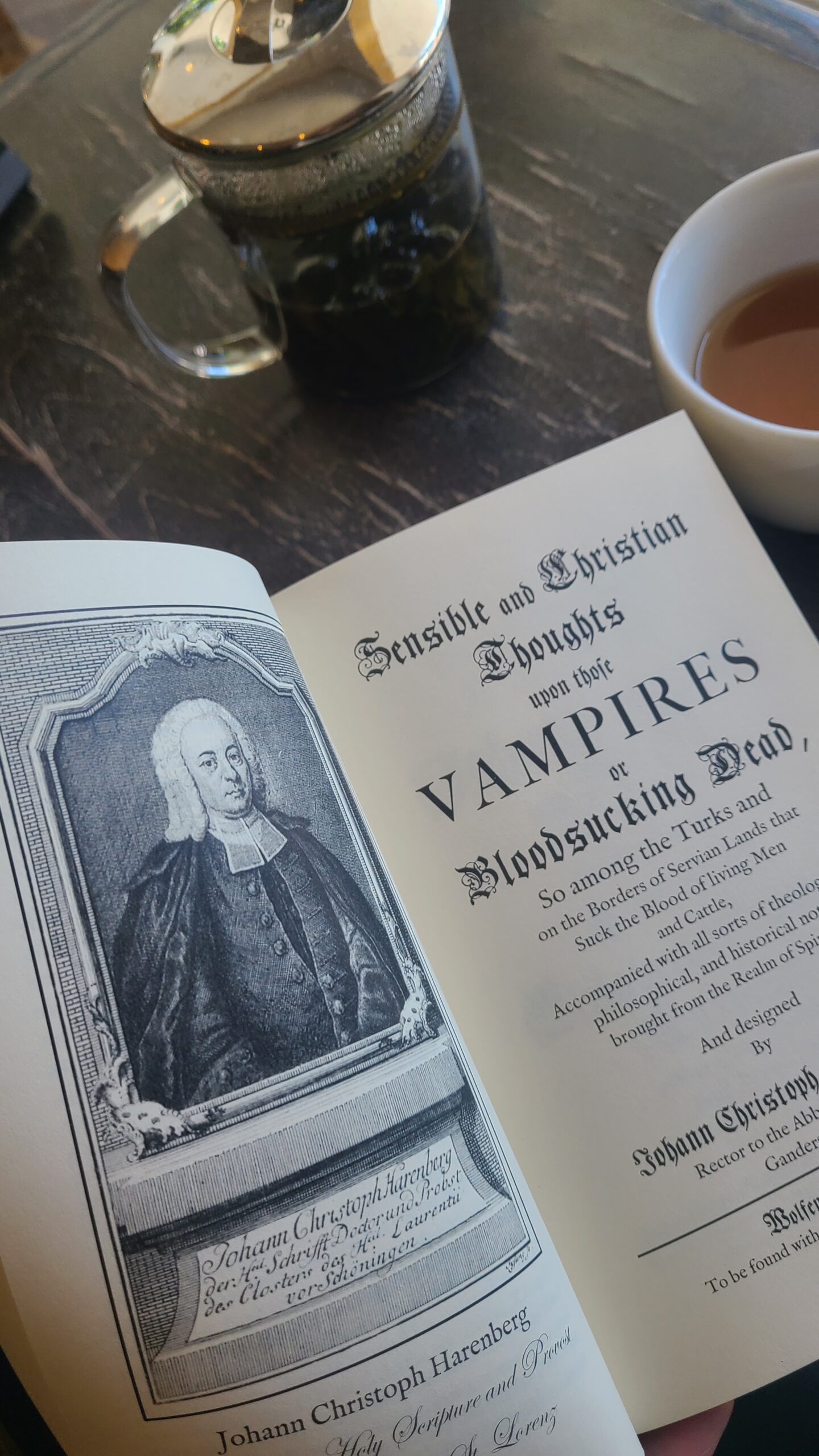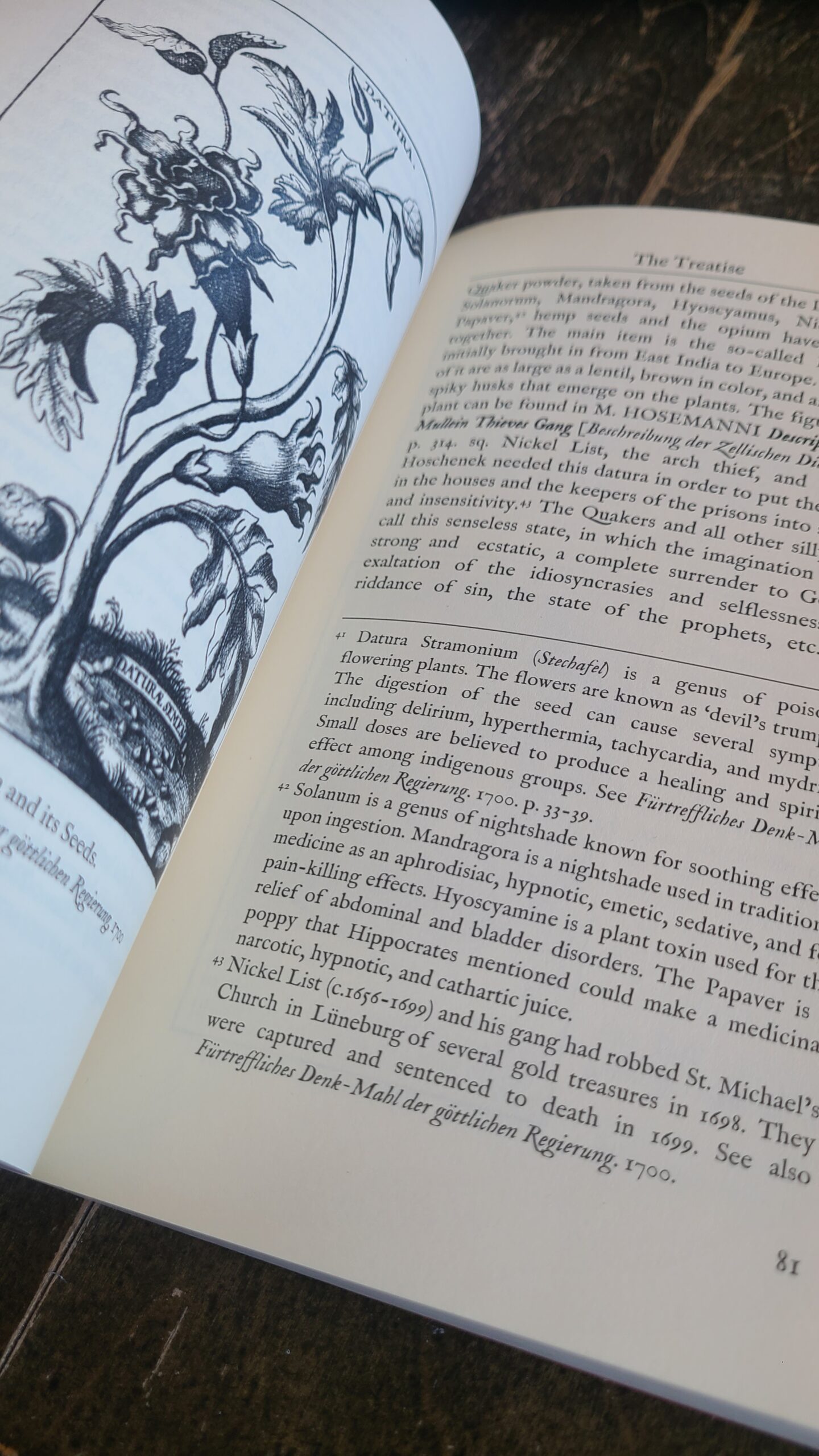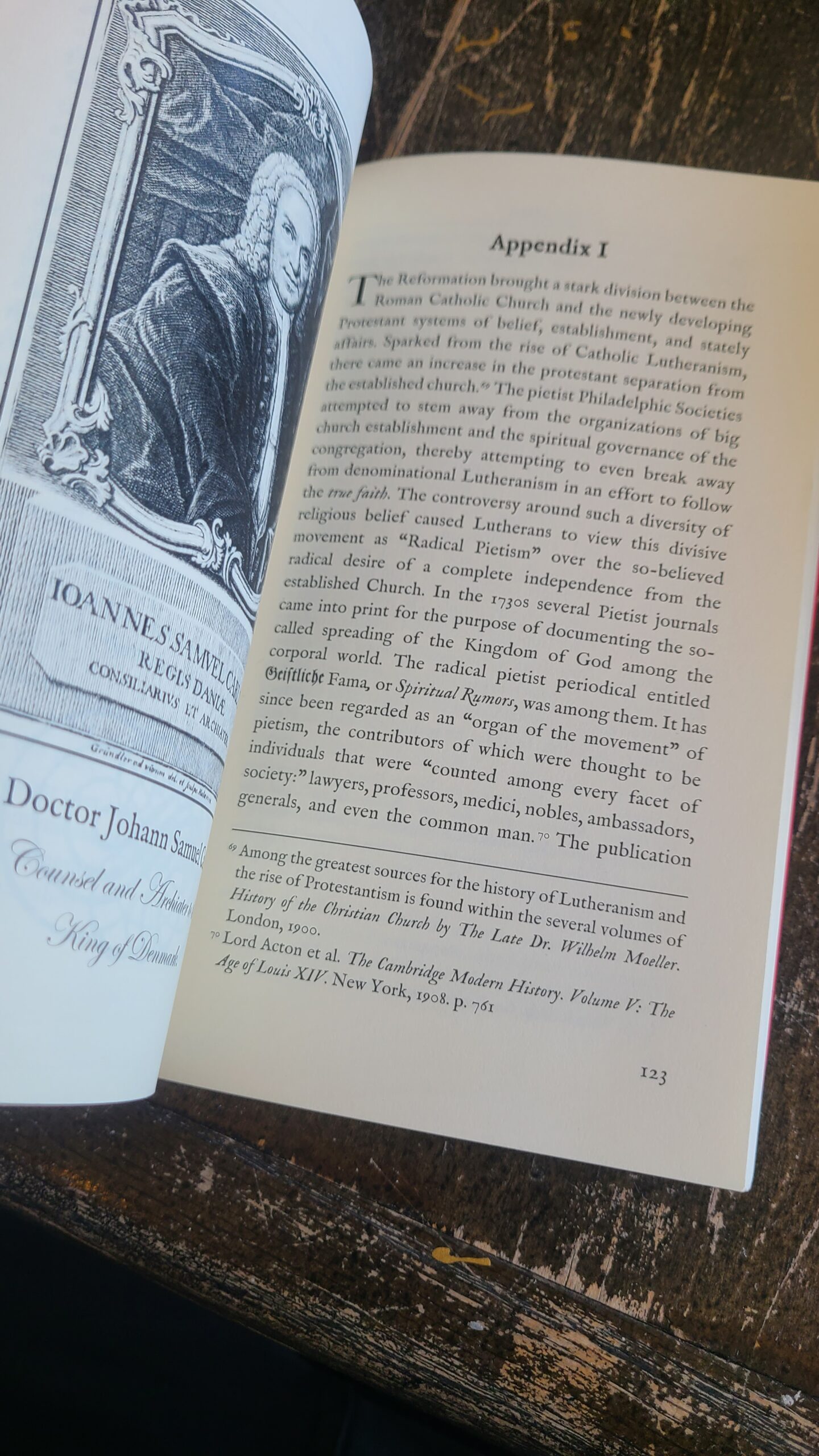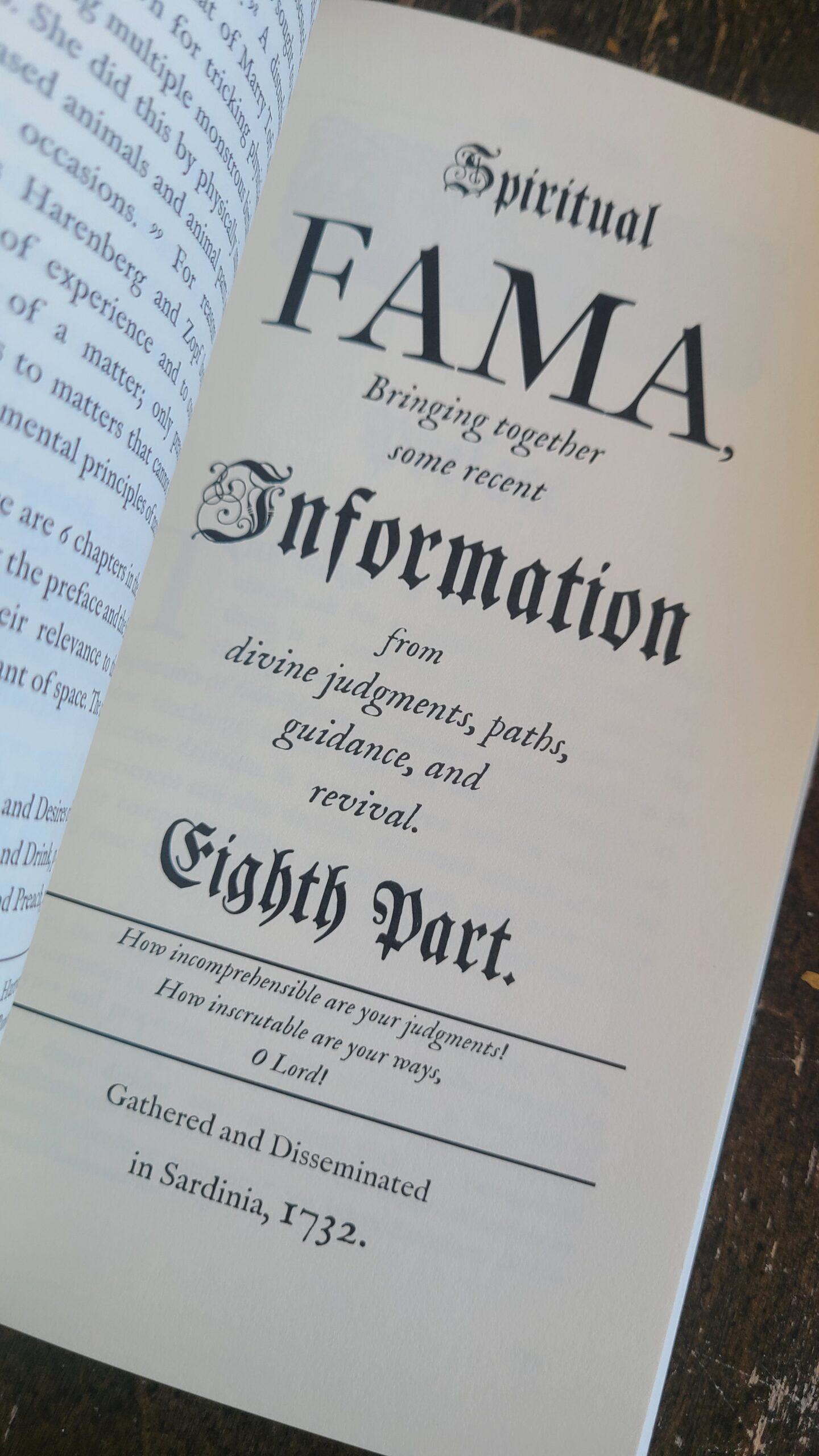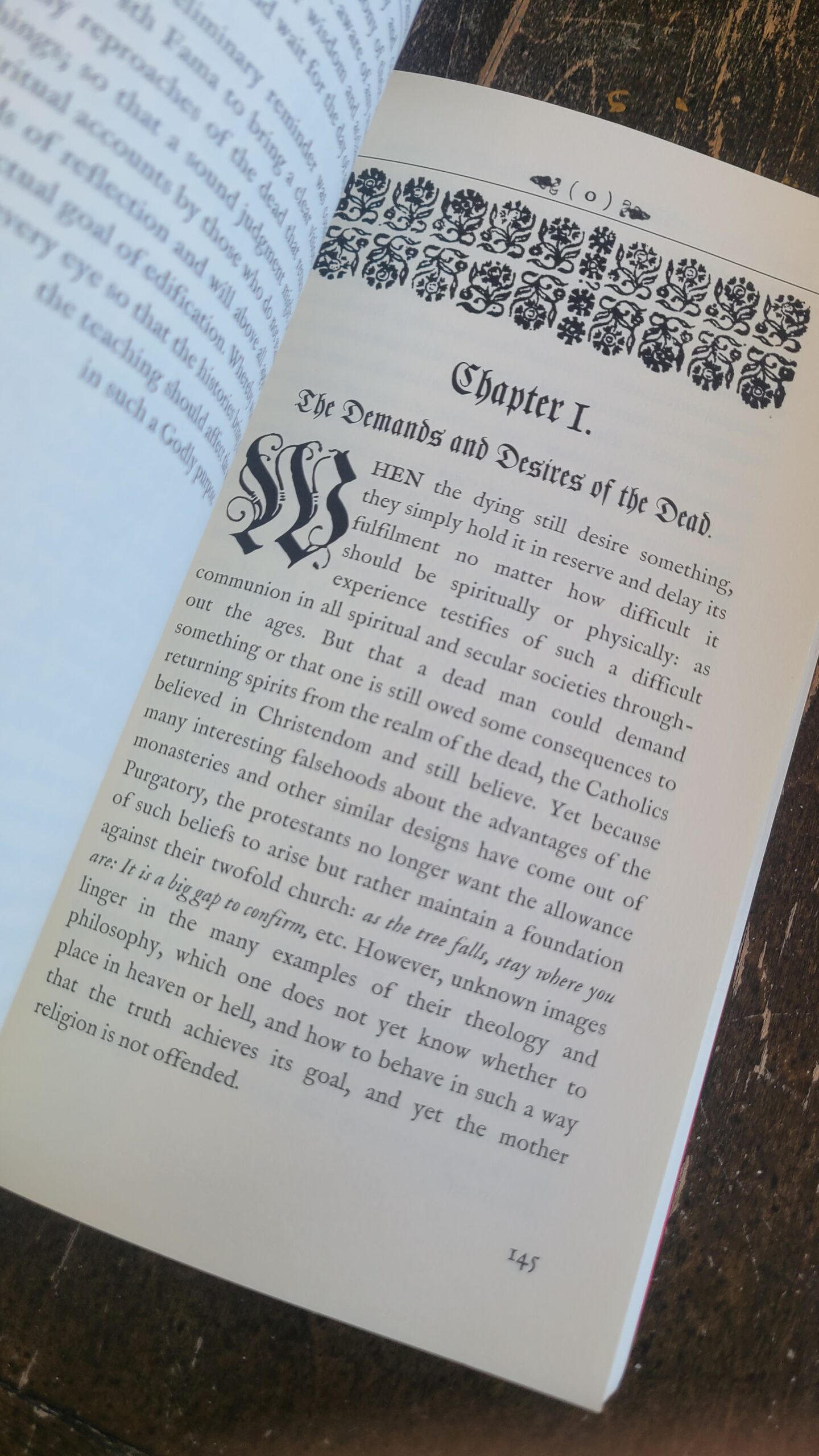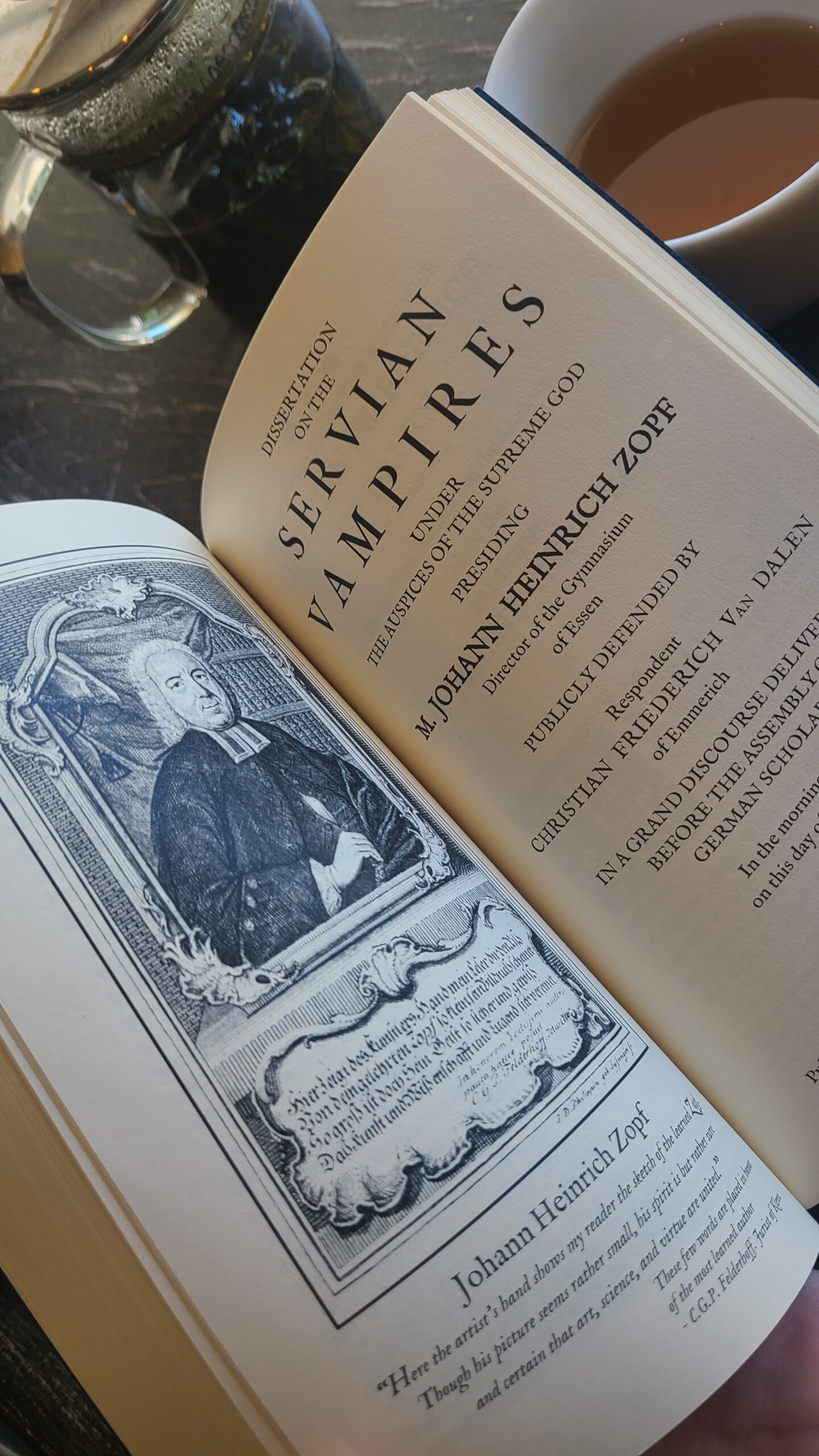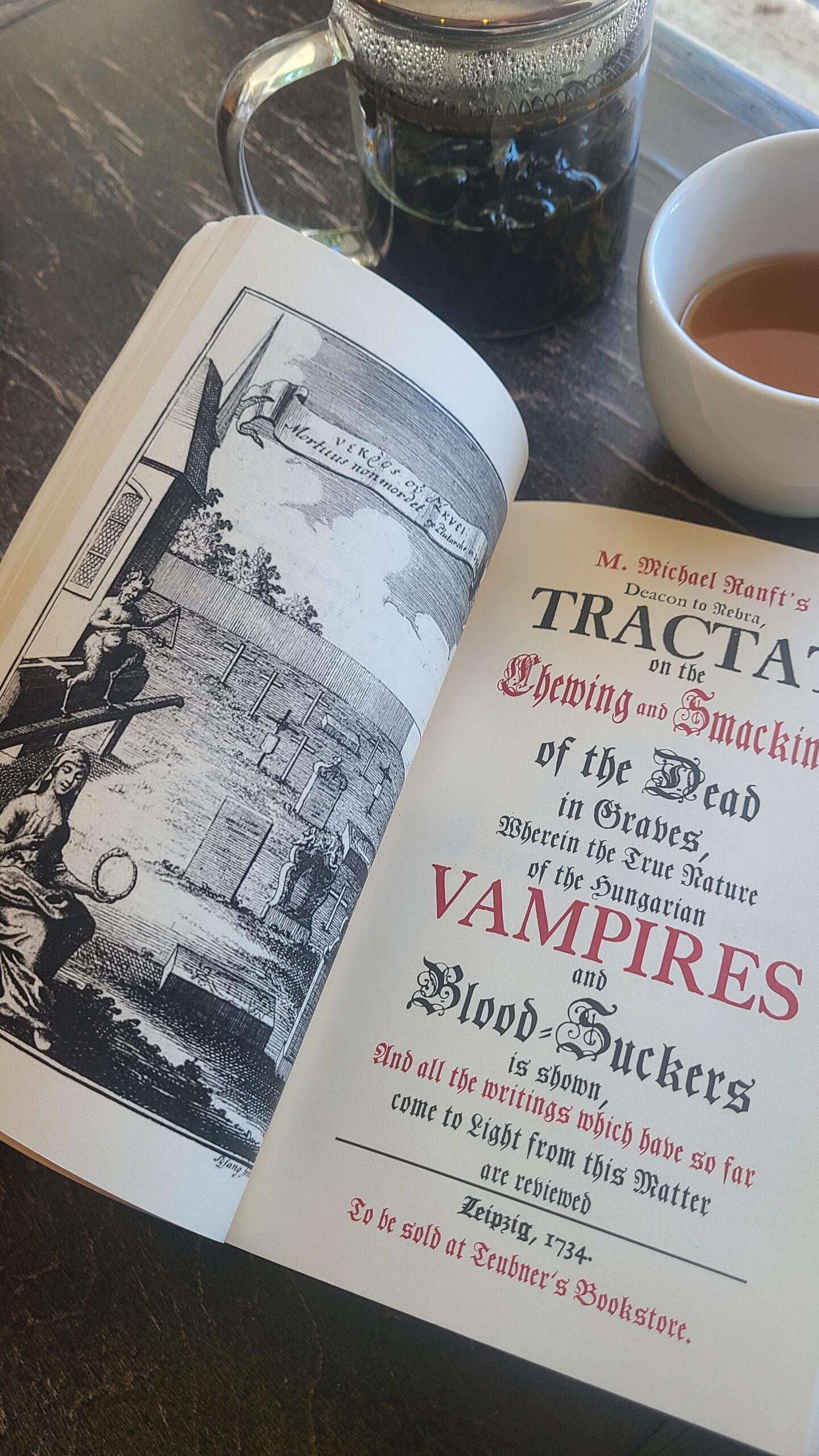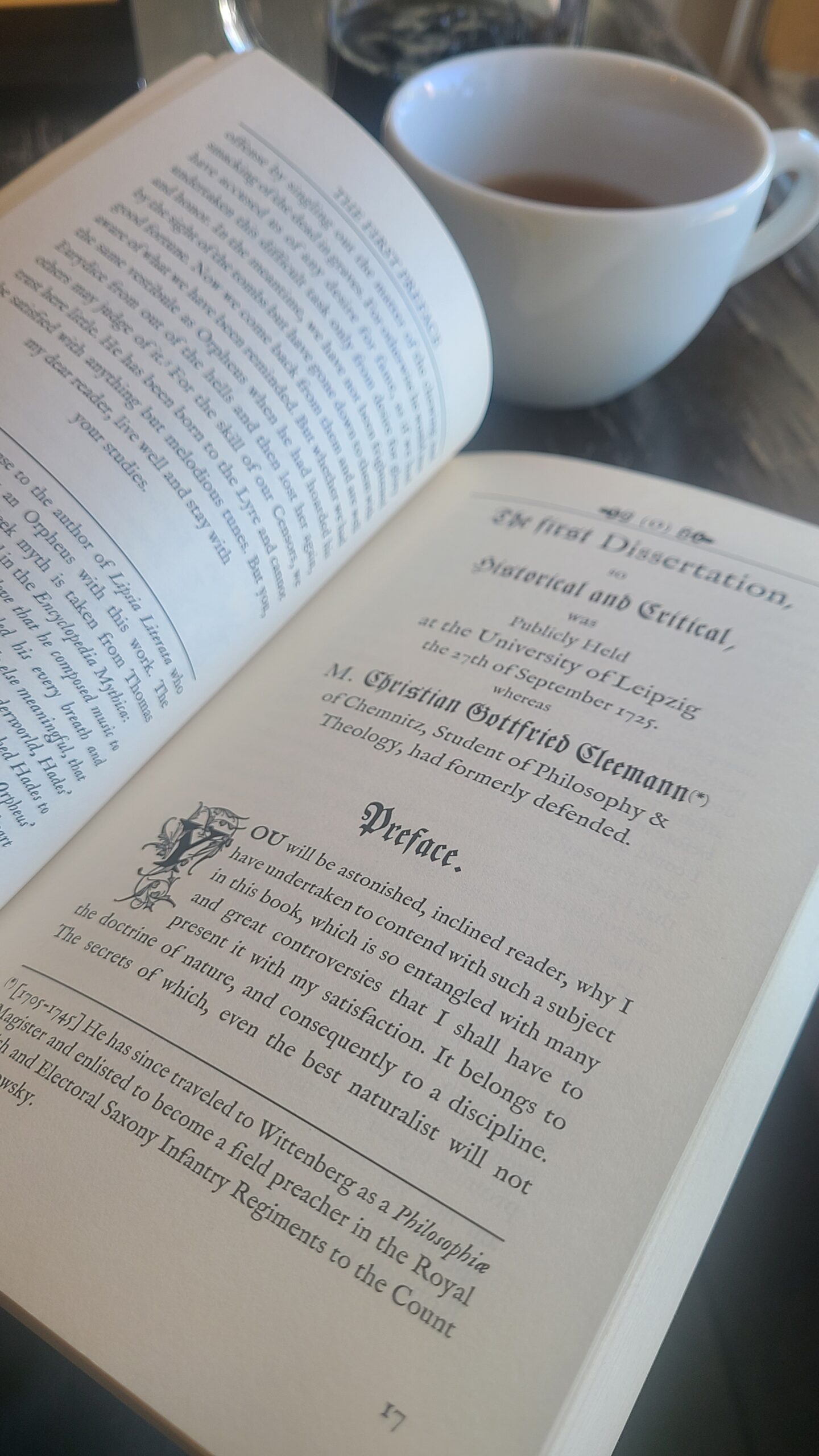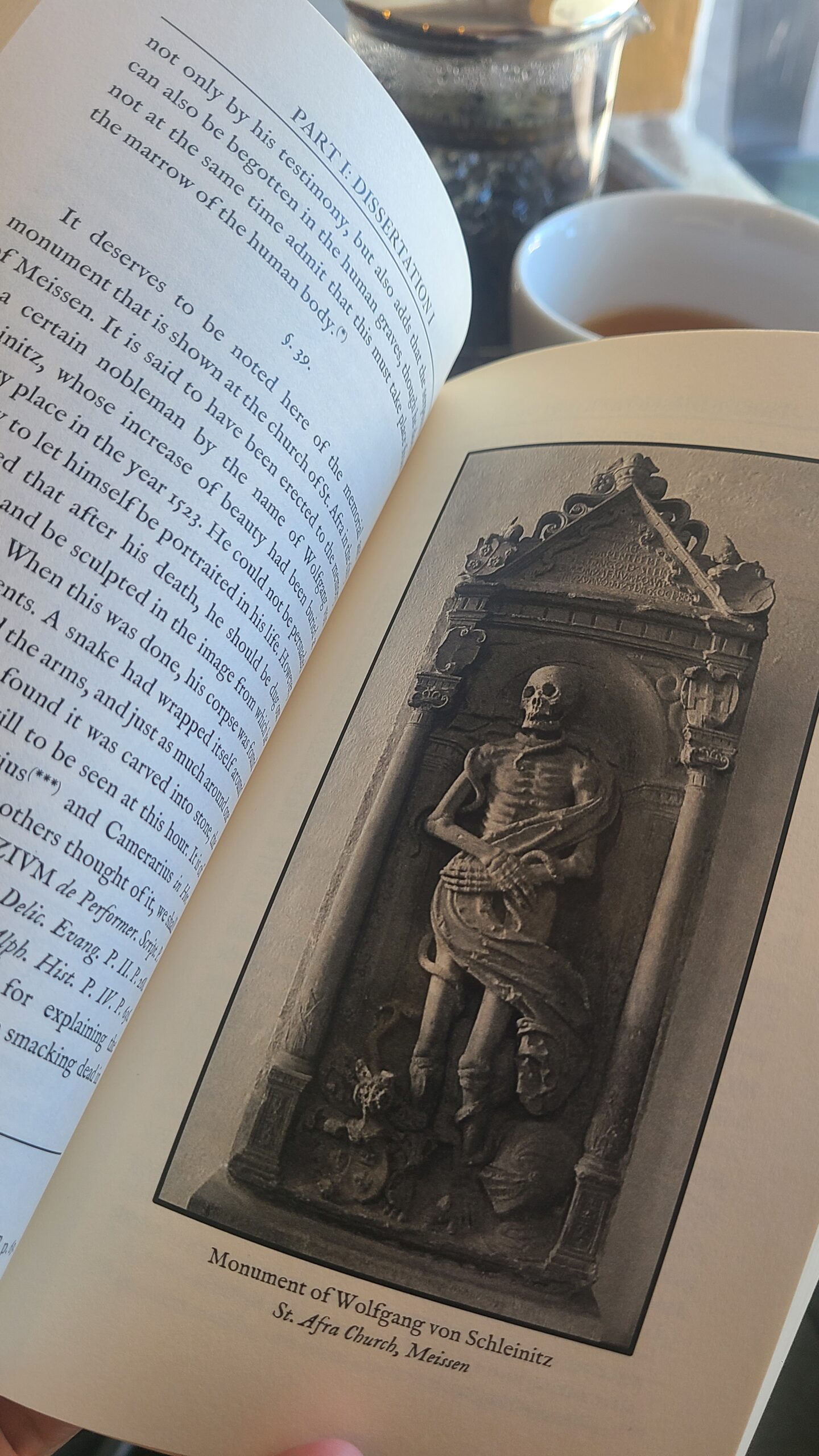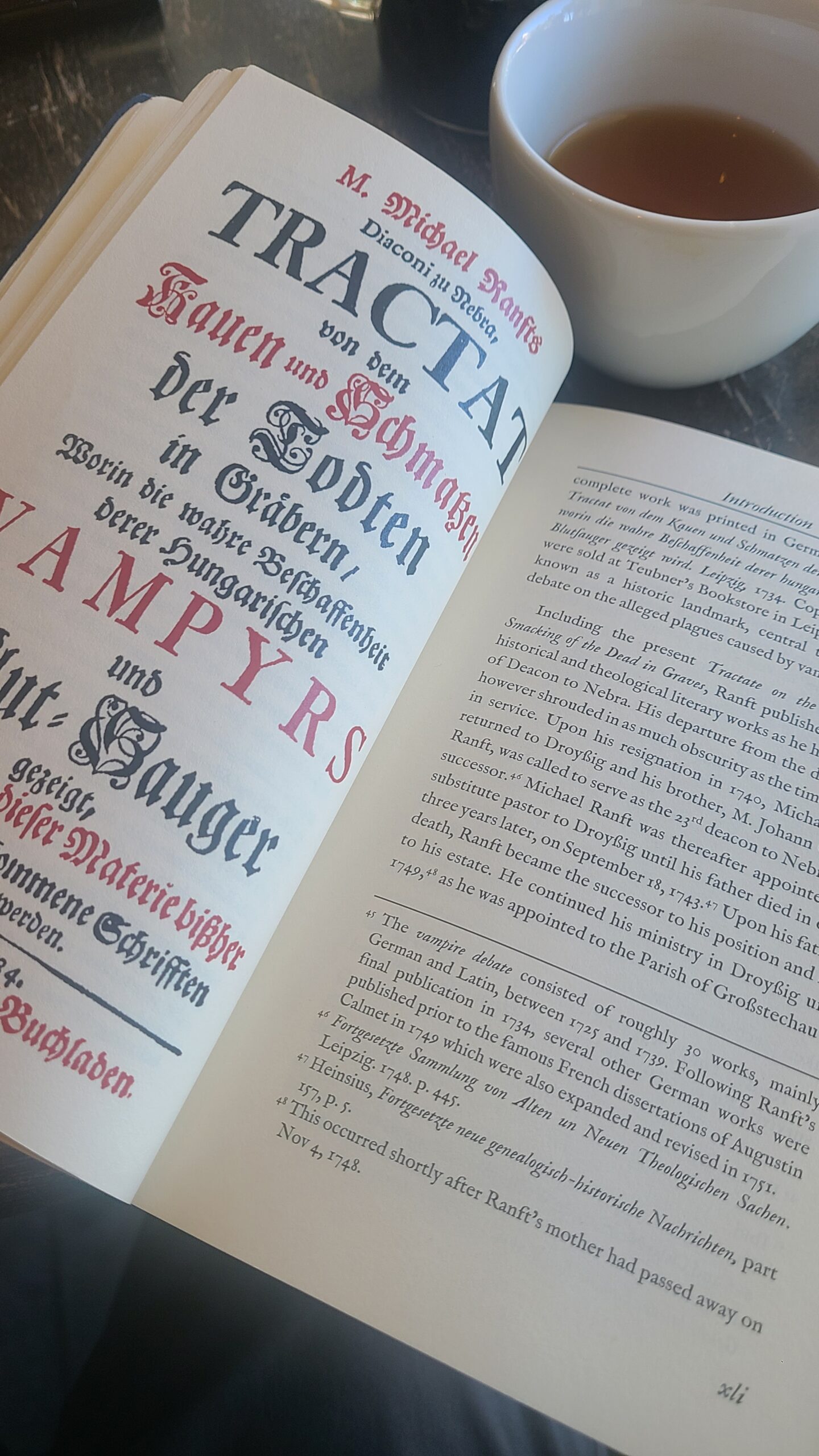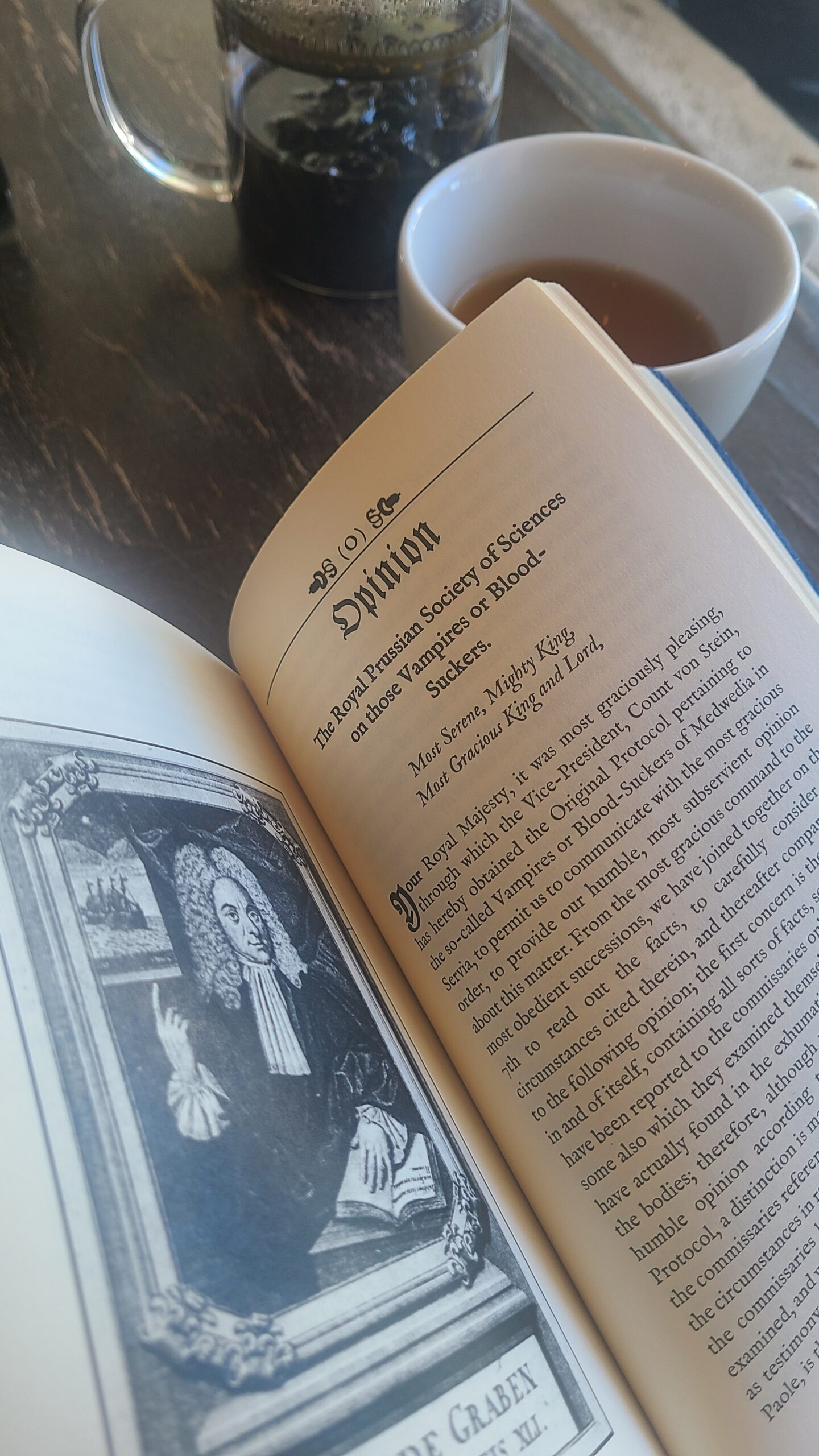The Historic Vampire Debate

Alchimia

Medicorum

Theologica
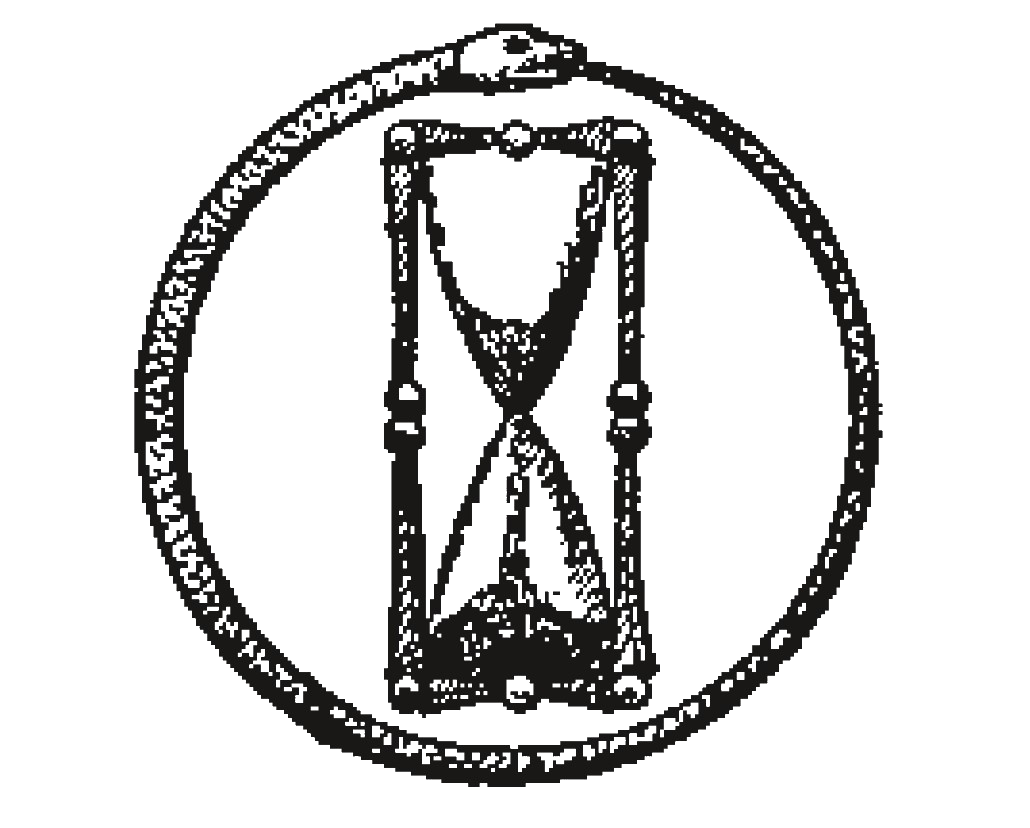
Occultas Qualitates
In the year 1732, an infamous report detailing the inquisition of a purportedly magical plague in the Kingdom of Serbia had sparked the greatest international controversy of the day. The report was signed and sealed by several imperial officials from the military regiments of both Prince Charles Alexander and Baron Furstenbush, narrating the circumstances surrounding an event of mass sudden death in the village Medvedja. Within a span of 2 months, 17 persons succumbed to a mysterious plague, declaring on their deathbeds of being ravaged and suffocated by specters of the recently deceased, then dying within a few days of it. As the deaths occurred in such a rapid succession, medical feldscher traveled to the rural village of Medvedja to interview the locals and conduct visitations of the 13 exhumed bodies that were alleged to be affected. Strange phenomena where observed. A number of them were discovered to be without the slightest stain of a natural human bodily decay, being fresh and incorruptible even in a period of months after their death and burial. Meanwhile, other bodies that were buried in a much shorter duration were discovered with advanced stages of decay. Upon examination and dissection of the incorruptible bodies, the physicians observed the shedding of old skin with fresh skin underneath, the growth of hair, nails, and teeth, liquid blood within the heart cavity, and with the interior organs in seemingly healthy condition. As the locals delineated the phenomena observed upon the incorruptible bodies as signs of an ancient evil, they implored the imperial authorities to permit the execution of these dead to rid the village of this maleficence of a magical plague. Upon the execution of such incorruptible dead, a body was said to groan and spit out blood upon a stake being driven into his heart, referencing the case of Arnold Paole who was executed in such a manner 5 years earlier. The report quickly spread throughout Europe and a controversy was quickly born when several figures of imperial nobility directly decreed for a scholarly investigation be carried out.
The Historic Vampire Debate is a collection of scholarly works and correspondence that outline a diversity of opinions and perspectives from among the highest and most learned classes of the Holy Roman Empire. It was through official correspondence, academic dissertations, and other printed works and periodicals that Scholars sought to argue whether the reported phenomena should be explained through the realm of heavenly miracles, demonic or magical jests, an occult quality of antipathy or sympathy, the spirits of the dead, or whether it all could be derived by the most hidden faculties of nature. This project sought to revive several of these older works and uncover the arguments from medical, hermetical, and theological perspectives, all of which aided the progress of scientific understanding into matters of nature seldom studied before.
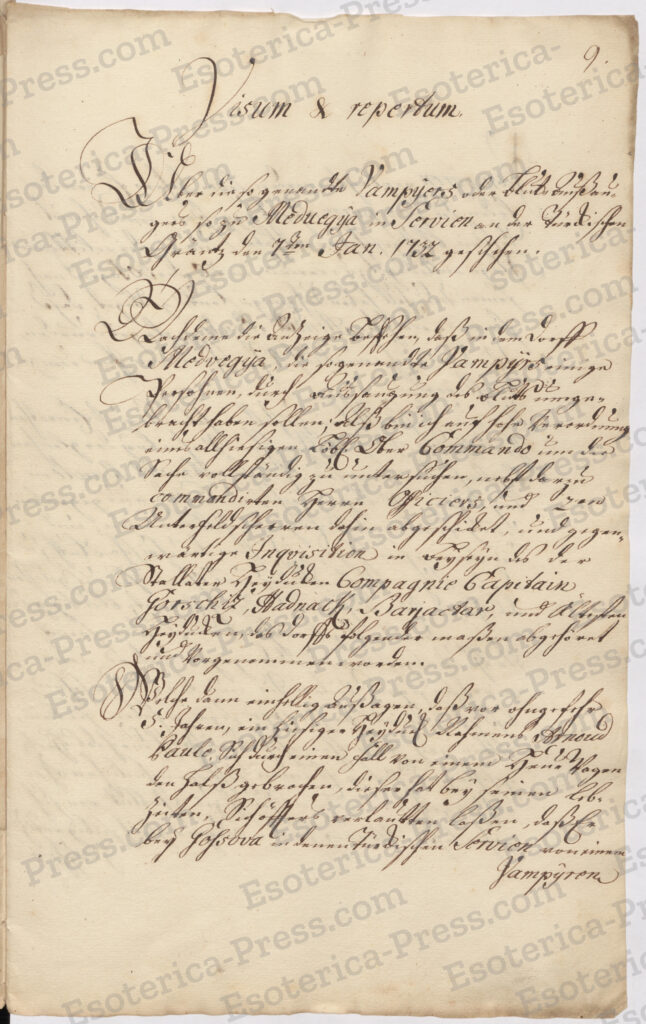
Visum et Repertum – Volumen Actorum (1732)
A page from a copy of the inquisition and autopsy report provided to King Frederick William I of Prussia and submitted to the Royal Prussian Society of Sciences. Held at the Berlin-Brandenburg Academy of Sciences Archives.
Publishing rights acquired by archival authorites.
Volume: Alchemy
An ensign of the Prince Charles Alexanderian Regiments named Siegmund Alexander Friedrich von Kottwitz immediately drafted a copy of the report and sent it with a letter that was written to Michael Ernst Ettmuller, a Public Professor of Physiology at Leipzig University who was also the acting Director of the Imperial Leopoldina-Carolina Academy of Natural Curiosities. His letter detailed how cases of this nature were commonly reported to imperial authorities and requested for the famous doctor to provide an explanation of whether these events could be derived from a kind of miracle, a demonic or sympathetic spirit, or if the whole matter could be ascribed to some unknown and hidden faculty of nature. These documents were soon after published anonymously in a short treatise entitled Official and Cumbersome Relation upon those Vampires or People-Suckers (1732). The work also included an anonymous letter that was sent to Ettmuller that explained the phenomena through the principles of Hermetic and Paracelsian philosophy. Using the principles of Paracelsian mysticism, the anonymous author puts forward the Doctrine of the Three Parts of Man (Statuirt a tres partes hominis) that ascribes the physical and spiritual parts of man (body, soul, and spirit) as being likened to the homogeneous states (solid, liquid, and gaseous) of all material substances. This concept gave credence to the purgatory of Roman Catholicism through the World-Spirit and the potential of humans to engage in corporal-spirit interaction through the principles of sympathy and antipathy.
Although it was an extremely popular opinion among certain religious denominations, this Paracelsian ascription of granting mankind a third part to the human existence was a heavily disputed doctrine. A physician named Gottlob Heinrich Vogt immediately published his Short Reservations upon those Official Relations on Account of Vampires or People and Cattle Suckers (1732) as refutation against the treatise of that anonymous alchemist. He shortly after expanded his thoughts with a second publication on the Third Part of Man (1732) with an appendix of his Doctrine of the Temperaments. Vogt uses the early teachings of medicine from Galen to break down the Faculties of Nature, the arguments of Aristotle upon the sensations and movement of the soul, and even touches upon the Paracelsian principles of Hermetic philosophy. Vogt however believed that the phenomena attributable to those bodies could have been derived from a kind of poison or venom, from which he utilizes the Doctrine of the Temperaments to prove his hypothesis.
Volume: Medicine
When Prussian King Frederick William I was given news of the event directly by Prince Charles Alexander, the Duke of Wurtemberg and governor to the Fortress of Belgrade over the Banat and Serbian territories, an order was made for the members and doctors of the Royal Prussian Society of Sciences to delegate on the matter and draft an official scientific opinion on March 7, 1732. The king’s chamberlain and occultist Otto von Graben zum Stein was to oversee this investigation as he was personally decreed to be the Vice-President of the Royal Society. Many nobles would seek out answers and correspondence between the learned and noble classes which boosted further public interest in the case. It is presumed that a Letter of One Good Friend to Another Good Friend Concerning the Vampyres (dated 26 March 1732) was written as a direct response to the letter of von Kottwitz. Famous physicians weighed in, including the Prussian King William’s personal physician and court council Georg Ernst Stahl, as did the personal physician to the King of Denmark, Johann Samuel Carl.
The Curious and very Wonderful Relation of those New Things in Servia presenting Vampires, etc. (1732) was semi-anonymously ascribed with the initials W.S.G.E. which may be attributable to the famed pathologist and chemist Georg Ernst Stahl. Johann Ernst Stahl and Johann Christian Fritsch were themselves pupils of the Stahlian methodology of medicine and pathology under the professorship of Michael Alberti, both of whom contributed to the work Presumptive Thoughts of a Weimar Medici upon those Vampires, or so-called Blood-Suckers, to which the Opinion of the Royal Prussian Society of Sciences’ considerations on Vampires is Attached (1732). Even Duke William Henry oversaw a Dissertation of Natural Philosophy that was presided by the physician Johann Christian Stock entitled Cadaveribus Sanguisugis, on those so called Vampires or Human-Suckers (13 May 1732). Several arguments were laid out from the physicians of the day on how the effects of disease, diet, the power of the mind, and even the emotional weight of conscience upon the soul could all have a strong influence over the economy of the entire body. These writings certainly show how this and similar cases have furthered the progress of forensic medicine and scientific discovery in the field of medico-legal death investigation through Early Modern concepts of taphonomy and pathology.
Volume: Theology
Princess Elizabeth Ernstine Antoinette and her knightly companion Johann Anton Kroll von Freyhen both returned to the Abbey of Gandersheim from a royal ball hosted by King Frederick William I in Berlin. Coming with word of this astonishing case, a noble order to investigate the theological questions raised from this event was bestowed upon a theologian named Johann Christoph Harenberg, who wrote his Sensible and Christian Thoughts upon those Vampires or Bloodsucking Dead (1733). Harenberg analyzed the scholarly reports of cases in Carniola, Poland, and Germany, comparing the phenomena described by the dying with effects of magic derived from the use of hallucinogens reported in many cases of witchcraft and even criminal enterprise. The writings of this period showed how the theological perspectives greatly differed between the Lutheran, Pietist, and Reformed movements of Christendom. Dr. Johann Samuel Carl, the personal physician to the King of Denmark, was an editor of the periodical Geistlich Fama (or Spiritual Rumors) which was an important publication for the growth and development of the Radical Peitist movement. Dr. Carl personally received a letter from the father of the imperial quarantine physician who first initiated the inquisition of the Serbian village Medvedjia and the letter was included in the 8th issue of the publication (1733). Even as a physician of the first rank, Carl supposes the spirits of the dead have a place among the living to seek penance for their misdeeds prior to their heavenly acceptance. Johann Heinrich Zopf presided the Dissertation on the Servian Vampires (Vampyris Serviensibus, 25 March 1733) which had many disagreements with the reasoning laid out in the Geistlich Fama, arguing against the so called World-Spirit and the Hermetic separation of the Three Parts of Man. Zopf’s arguments against the returning spirits of the dead were posed, ascribing the Lutheran perspective that the culprit of this magical plague could be none other than the infernal workings of the devil. Interestingly, Zopf later presided over the Physico-Theological Dissertation on What is Just Concerning the Cruentation of Cadavers (Cruentationem Cadaverum, Sept. 9, 1737) which dealt with bleeding perceived on the bodies of the dead in the presence of their murderers and the theological disputations of how these occurrences have historically been applied to cases of homicide in criminal jurisprudence.
Volume: Occult Philosophy
Another infamous case of sudden mass death occurred along the borderlands of Turkish-Serbia just south of the Banat of Temeswar under the governance of Prince Charles Alexander. In 1725, 9 individuals succumbed to death in a span 8 days. The locals blamed the pestilence on an individual named Peter Plogojowitz who died 10 weeks prior. The Imperial Provisor Ernst Fombald was accompanied by a priest as he went to investigate the matter. A report of this governing official detailed the circumstances of the case with the visitation and phenomena observed on the exhumed incorruptible cadaver which the locals executed as if alive. The report quickly spread across Europe, causing Magister Michael Ranft to conduct a historical and philosophical investigation into the circumstances outlined in the report. He wrote the publicly defended Dissertatio Historico-Critica De Masticatione Mortuorum in Tumulis at the University of Leipzig in the same year (1725). Promising to write a second dissertation on the subject, he finished it three years later while acting as an appointed Deacon to the village Nebra. Both dissertations were printed together in a single volume under the title De Masticatione Mortuorum in Tumulis, Liber Singularis: Exhibens Duas Exercitationes, Quarum Prior Historico-Critica Posterior Philosophica est (1728). Ranft utilized philosophical and theological principles to investigate the occult or hidden qualities of nature, reaching into the foundations of hermetic principles, the beliefs and narratives of ancient pagan legends, and the immense volumes of the scholars that predated him to determine whether the cause could be deduced from Satanic, Godly, or purely natural origins.
It would turn out that Ranft’s work became an influential landmark to the scholars of medicine, chemistry, and theology who came after him. The scholars of this grand debate often quoted, plagiarized, and criticized Ranft’s work. Given the wide controversy of the 1732 case, Ranft decided to expand his dissertations to apply his hypothesis operationes de corporum in corpa (effects of bodies upon bodies) to these new circumstances and critique the various scholars that wrote about it. He researched 20 works that arose from cases of vampirism, called out his plagarists, responded to the arguments of his adversaries, and compiled all of his writings in a German volume entitled Tractate on the Chewing and Smacking of the Dead in Graves (1734). He also appended his work with the Opinion of the Royal Prussian Society of Sciences upon those Vampires or Bloodsuckers, dated March 11, 1732.
